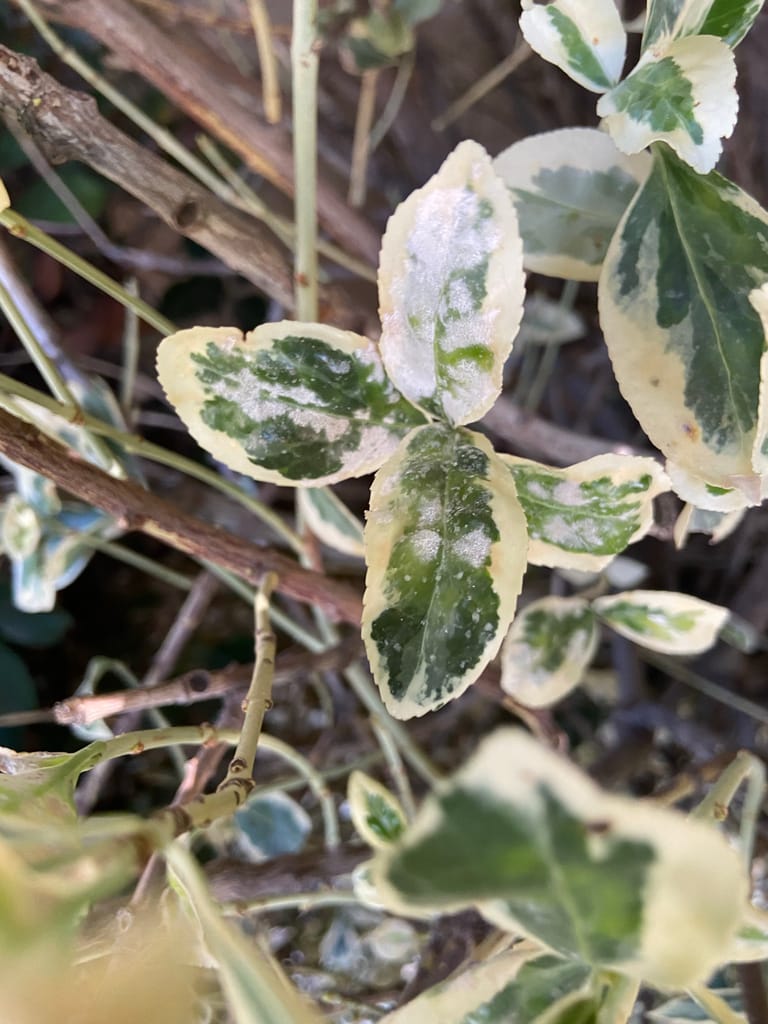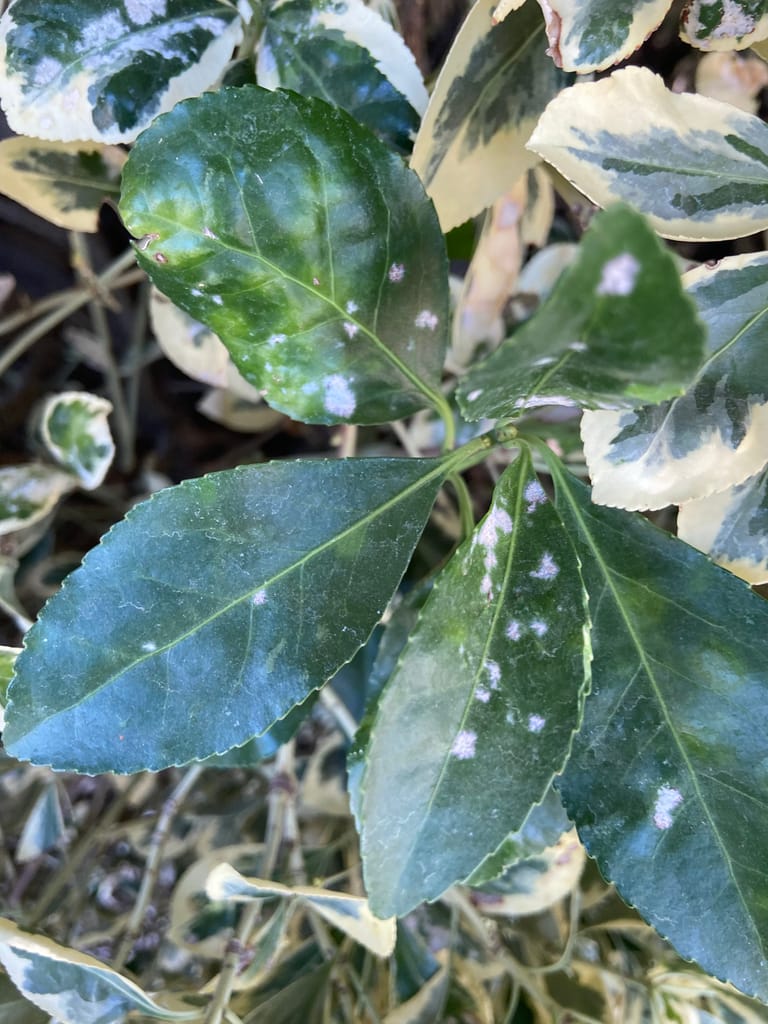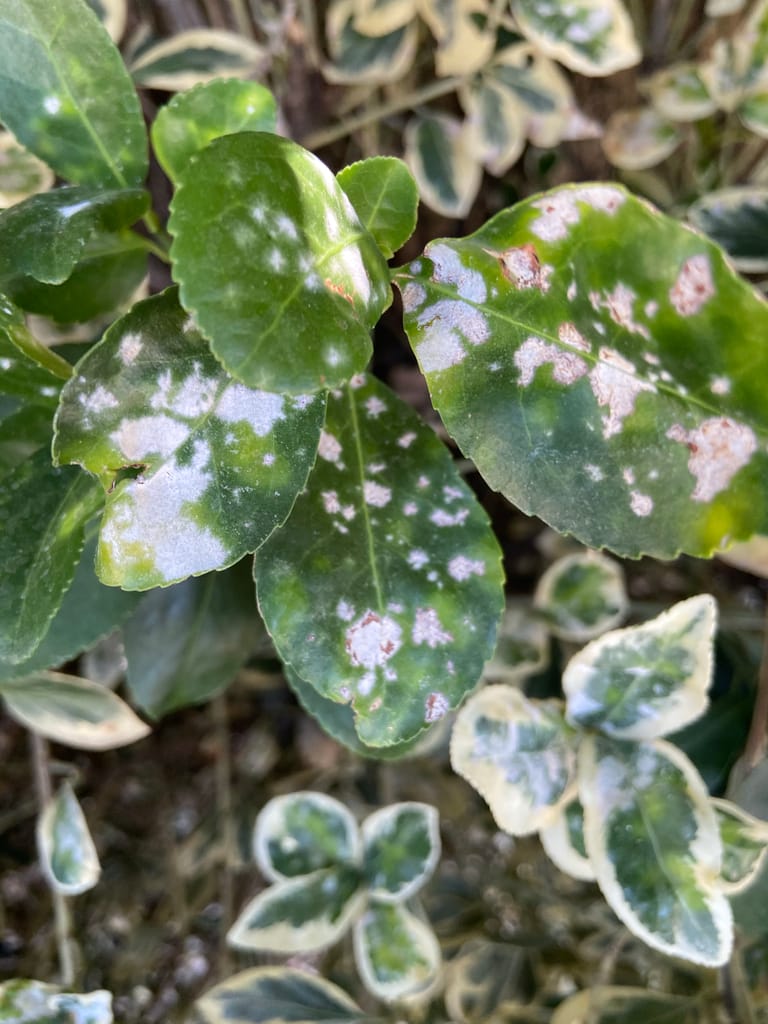What is Powdery Mildew?
Powdery mildew is a common disease for many plants found in the high desert. There are various types of powdery mildew fungi and they typically only cause powdery mildew to a certain species or family of plants.
Symptoms and Identification of Powdery Mildew
Powdery mildew is generally recognizable by the white powdery growth on leaf surfaces. This can be found on stems, leaves, flowers, and fruit. Leaves can also curl up, be dwarfed, and become distorted before any white powdery growth appears. Powdery mildew can infect new and old growth the same. Crape myrtle, rose, and sycamores are more seriously impacted by this disease than other species. Below is a list of common high desert plants that are susceptible:
- California poppy
- Crape myrtle
- Dahlia
- Delphinium
- Euonymus
- Hydrangea
- Lilac
- London plant tree
- Mint
- Oak
- Pansy
- Phlox
- Rose
- Snapdragon
- Sweet pea
- Verbena
- Vinca
- Zinnia
For images of plants with powdery mildew scroll to the bottom for help in identifying if it is affecting your plant. If you have photos you’d like to add to the photos below you can send them to [email protected].
Disease Cycle
Powdery mildew fungi use the living tissue of plants to grow and reproduce. They produce structures to survive on perennial plants and fallen leaves from affected plants. Wind and splashing water are primarily responsible for spreading these fungi to potential hosts. Favorable conditions are needed to induce infection and germination of spores, some of these conditions include:
- High relative humidity in the evening
- Low relative humidity during the day
- Ideal temperature ranges of 60° to 80°F
- Shade
Most powdery mildew fungi spores can germinate in the absence of free water. Water can actually inhibit germination and kill the spores of some powdery mildew fungi if left on plant tissue for an extended period. Extreme sunlight and high leaf temperatures (above 95°F) can also be lethal to the fungus.
Management of Powdery Mildew
Prevention is always the best method of control, but some species that are susceptible can require additional fungicides. To mechanically control powdery mildew without chemicals you can:
- Plant resistant varieties
- Placing plants in full sun
- Provide good air circulation
- Avoid excess fertilizing
- Overhead watering
- This can reduce the spread of powdery mildew by washing the leaves off and killing spores that land in water. However, it can increase the likelihood for other fungal infections such as black spot on roses and raises the general humidity level. It is recommended to water overhead during the late morning to avoid providing favorable conditions.
- Removing leaves with powdery mildew visible (if this is feasible or there is a small infection)
Keep in mind that you may not need powdery mildew resistant varieties. Roses, for example, may need to be resistant to other harmful diseases if the microclimate of where they are planted doesn’t have favorable conditions for powdery mildew (Roses planted in full sun and watered in the late morning). Resistant varieties are available for several species, among them are:
- Crape Myrtle – varieties with Native American names such as ‘Catawba,’ ‘Cherokee,’ ‘Hopi,’ ‘Muskogee,’ ‘Tuskegee,’ ‘Wichita,’ ‘Natchez’
- Euonymus – any varieties with variegated leaves are more resistant
- Rose – Rosa rugosa (Beach Rose), Arjun, Montezuma, and Super Star
Chemical Control
There are 2 main types of chemical control, oil and sulfur based products. These products should not be used together or within 2 weeks of each other or you can further harm your plant. They should also not be used when daily temperatures are above 90°F or if your plants are drought stressed. Sulfur products are generally only effective when they are applied before symptoms appear. Therefore, they aren’t the best option for infestations. The way to identify an sulfur based product is by checking the active ingredients for Sulfur. Sulfur can be damaging to some squash and melon varieties. Sulfur dust can be difficult to use, can irritate your skin and eyes, and be limited in the amount of plants it can be used on. If you can’t tell, I would generally recommend not using Sulfur based fungicides if you can unless you have a specific reason not to :D.
Below is a list of fungicides (that is not nearly complete) that have been recommended by various state cooperative extensions for the treatment of powdery mildew:
- Saf-T-Side Spray Oil
- Sunspray Ultra-Fine Spray Oil
- Powdery Mildew Killer
- E-rase
- Neem Oil (Rose Defense, Shield-All, Triact, Powdery Mildew Killer, etc.)
Toxicity
As with almost all chemicals there is an associated toxicity rating for the active ingredients of different pesticides, fungicides, herbicides, and rodenticides. Here are a few places you can learn more about their toxicity with a table of their rating and what the rating means (first is the preferred):
http://pods.dasnr.okstate.edu/docushare/dsweb/Get/Document-3591/EPP-7457web.pdf
https://extension.psu.edu/toxicity-of-pesticides
These lists do not discuss how long these chemicals stay in the environment, how they affect other plants, or how they affect other beneficial organisms.











